- Clone
- H5/FcRL3 (See other available formats)
- Regulatory Status
- RUO
- Other Names
- Fc receptor-like 3 (FCRL3), Immune receptor translocation-associated protein 3 (IRTA3), SH2 domain-containing phosphatase anchor protein 2 (SPAP2), IFGP family protein 3 (IFGP3)
- Isotype
- Mouse IgG2b, κ
- Ave. Rating
- Submit a Review
- Product Citations
- publications
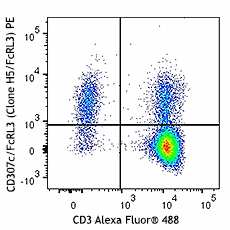
-

Human peripheral blood lymphocytes were surface stained with CD3 Alexa Fluor® 488 and H5/FcRL3 PE (top) or Mouse IgG2b, κ PE Isotype control (bottom). -

-

Human peripheral blood lymphocytes were surface stained with CD4 Alexa Fluor® 647 and H5/FcRL3 PE then treated with True-Nuclear™ Transcription Factor Buffer Set (Cat. No. 424401). Cells were then stained with FOXP3 (clone 206D) Brilliant Violet 421™. Data shown was gated on CD4+ peripheral blood lymphocytes. -

| Cat # | Size | Price | Save |
|---|---|---|---|
| 374405 | 25 tests | ¥32,120 | |
| 374406 | 100 tests | ¥79,200 |
CD307c is a type 1 transmembrane glycoprotein in the FcRL family of the Ig gene superfamily that is conserved in humans and not found in mice. It is expressed on NK cells, T cell, regulatory T cell, B cell and plasma cell subsets. Intracellular ITAM and ITIM motifs in conjunction with extracellular Ig domains are thought to play a role in the regulation of immune response, and autoimmune function. Impairment of normal FcRL3 function has been linked to systemic lupus erythematosus, rheumatoid arthritis, and autoimmune thyroid disease.
Product DetailsProduct Details
- Verified Reactivity
- Human
- Antibody Type
- Monoclonal
- Host Species
- Mouse
- Immunogen
- FcRL3 full length expression plasmid DNA, followed by cell boost using transiently transfected cells with the same plasmid.
- Formulation
- Phosphate-buffered solution, pH 7.2, containing 0.09% sodium azide and BSA (origin USA)
- Preparation
- The antibody was purified by affinity chromatography and conjugated with PE under optimal conditions.
- Concentration
- Lot-specific (to obtain lot-specific concentration and expiration, please enter the lot number in our Certificate of Analysis online tool.)
- Storage & Handling
- The antibody solution should be stored undiluted between 2°C and 8°C, and protected from prolonged exposure to light. Do not freeze.
- Application
-
FC - Quality tested
- Recommended Usage
-
Each lot of this antibody is quality control tested by immunofluorescent staining with flow cytometric analysis. For flow cytometric staining, the suggested use of this reagent is 5 µl per million cells in 100 µl staining volume or 5 µl per 100 µl of whole blood.
- Excitation Laser
-
Blue Laser (488 nm)
Green Laser (532 nm)/Yellow-Green Laser (561 nm)
-
Application References
(PubMed link indicates BioLegend citation) -
- Nagata S, et al. 2009. J. Immunol. 182:7518-26.
- RRID
-
AB_2687380 (BioLegend Cat. No. 374405)
AB_2687380 (BioLegend Cat. No. 374406)
Antigen Details
- Distribution
-
NK, T, regulatory T, B, and plasma cell subsets.
- Interaction
- Tyrosine-protein phosphatase non-receptor type 6 (PTPN6).
- Cell Type
- B cells, NK cells, Plasma cells, T cells, Tregs
- Biology Area
- Immunology
- Molecular Family
- CD Molecules, Fc Receptors
- Antigen References
-
1. Bin Dhuban K, et al. 2015. J. Immunol. 194(8):3687-96.
2. Yuan M, et al. 2016. Mol. Neurobiol. 53:2029-35.
3. Fang Y, et al. 2016. Immunobiology. 221(1):56-62. - Gene ID
- 115352 View all products for this Gene ID
- UniProt
- View information about CD307c/FcRL3 on UniProt.org
Related Pages & Pathways
Pages
Related FAQs
- What type of PE do you use in your conjugates?
- We use R-PE in our conjugates.
Other Formats
View All CD307c/FcRL3 Reagents Request Custom Conjugation| Description | Clone | Applications |
|---|---|---|
| PE anti-human CD307c/FcRL3 | H5/FcRL3 | FC |
| Ultra-LEAF™ Purified anti-human CD307c/FcRL3 | H5/FcRL3 | FC |
| Alexa Fluor® 647 anti-human CD307c/FcRL3 | H5/FcRL3 | FC |
| PE/Cyanine7 anti-human CD307c/FcRL3 | H5/FcRL3 | FC |
| TotalSeq™-C0826 anti-human CD307c/FcRL3 | H5/FcRL3 | PG |
| TotalSeq™-B0826 anti-human CD307c/FcRL3 Antibody | H5/FcRL3 | PG |
Customers Also Purchased
Compare Data Across All Formats
This data display is provided for general comparisons between formats.
Your actual data may vary due to variations in samples, target cells, instruments and their settings, staining conditions, and other factors.
If you need assistance with selecting the best format contact our expert technical support team.
-
PE anti-human CD307c/FcRL3
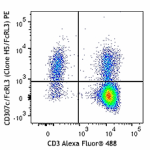
Human peripheral blood lymphocytes were surface stained with... 
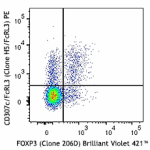
Human peripheral blood lymphocytes were surface stained with... 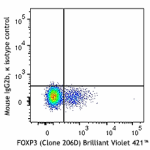
-
Ultra-LEAF™ Purified anti-human CD307c/FcRL3
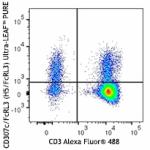
Human peripheral blood lymphocytes were surface stained with... 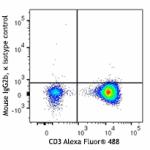
-
Alexa Fluor® 647 anti-human CD307c/FcRL3
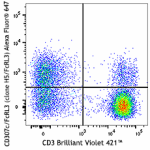
Human peripheral blood lymphocytes were surface stained with... 
-
PE/Cyanine7 anti-human CD307c/FcRL3

Human peripheral blood lymphocytes were surface stained with... -
TotalSeq™-C0826 anti-human CD307c/FcRL3
-
TotalSeq™-B0826 anti-human CD307c/FcRL3 Antibody










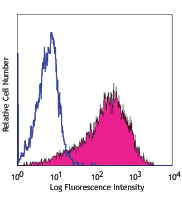
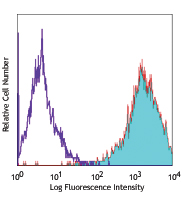
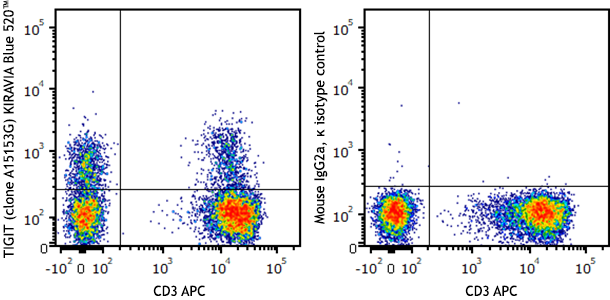
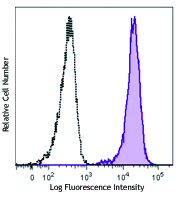



Follow Us